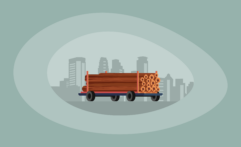15 Most Sustainable Bag Brands: The Conscious Consumer’s Guide
Affiliate Disclosure
Hey fellow impactful ninja ?
You may have noticed that Impactful Ninja is all about providing helpful information to make a positive impact on the world and society. And that we love to link back to where we found all the information for each of our posts.
Most of these links are informational-based for you to check out their primary sources with one click.
But some of these links are so-called "affiliate links" to products that we recommend.
Why do we add these product links?
First and foremost, because we believe that they add value to you. For example, when we wrote a post about the environmental impact of long showers, we came across an EPA recommendation to use WaterSense showerheads. So we linked to where you can find them. Or, for many of our posts, we also link to our favorite books on that topic so that you can get a much more holistic overview than one single blog post could provide.
And when there is an affiliate program for these products, we sign up for it. For example, as Amazon Associates, we earn from qualifying purchases.
What do these affiliate links mean for you?
First, and most importantly, we still only recommend products that we believe add value for you.
When you buy something through one of our affiliate links, we may earn a small commission - but at no additional costs to you.
And when you buy something through a link that is not an affiliate link, we won’t receive any commission but we’ll still be happy to have helped you.
What do these affiliate links mean for us?
When we find products that we believe add value to you and the seller has an affiliate program, we sign up for it.
When you buy something through one of our affiliate links, we may earn a small commission (at no extra costs to you).
And at this point in time, all money is reinvested in sharing the most helpful content with you. This includes all operating costs for running this site and the content creation itself.
What does this mean for me personally?
You may have noticed by the way Impactful Ninja is operated that money is not the driving factor behind it. It is a passion project of mine and I love to share helpful information with you to make a positive impact on the world and society. However, it's a project in that I invest a lot of time and also quite some money.
Eventually, my dream is to one day turn this passion project into my full-time job and provide even more helpful information. But that's still a long time to go.
Stay impactful,
Amid growing concerns about the textile industry’s environmental impact, there is pressure to find greener clothes and accessories for your wardrobe, from a dependable backpack to a stylish clutch. Unfortunately, fashion greenwashing makes it harder for you and all other consumers to figure out which clothing brands offer the most eco-friendly garments and accessories. So, we had to ask: Which are the most sustainable bag brands?
The most sustainable bag brands are HYER GOODS, United by Blue, and BOTTLETOP, which prioritize reclaimed and recycled materials, reduce waste, and strive for circularity. In addition, O My Bag and Terra Thread reduce carbon emissions and adhere to ethical manufacturing.
Whether you are searching for a weekend trip backpack or a special evening bag to add to your wardrobe without negatively impacting the soil, the water, the animals, and other people, there is a brand for you. So, let’s keep reading to learn more about the most sustainable bag brands and how they ensure sustainable, ethical practices.
Here’s How We Selected the 15 Most Sustainable Bag Brands
Bags can be one of the higher-impact and less sustainable clothing accessories due to the conventional use of resource-intensive materials like animal-derived leather, synthetic fabrics made with virgin fossil fuels, or canvas based on traditional cotton.
“Sustainable: The ability to be maintained at a certain rate or level | Avoidance of the depletion of natural resources in order to maintain an ecological balance”
Oxford Dictionary
The brands on this list were chosen based on their commitment and actions to promote sustainable practices while reducing the environmental impacts of the textile industry.
They are transparent about their materials, processes, and workforce management within their supply chain.
Some brands focus their efforts on reducing waste and optimizing natural resources while others strive to reduce the carbon footprint of their clothes.
All of these brands share the commitment to reshape the textile industry toward a more sustainable and Earth-friendly sector.
These Are the 15 Most Sustainable Bag Brands
Most Sustainable Bag Brands
Overall, these bag brands are sustainable. Yet, they take various approaches to reduce environmental impacts and uphold ethical standards. Let’s dive into each brand and find out more.
HYER GOODS: Bags Made With Deadstock
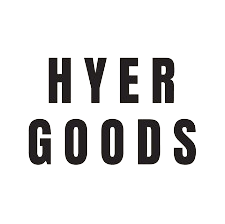

“By upcycling “trash” we eliminate the massive energy footprint needed to cultivate land, livestock, crops and fertilizers, while simultaneously reducing the amount of waste being sent to landfill. ”
HYER GOODS
🌎
How do they ensure their sustainability?
HYER GOODS ensures sustainability by rescuing yarns and fabrics abandoned by the fashion industry and turning them into beautiful bags, clothing items, and accessories. For example, their Luxe Mini Bucket Bag is cut from leather leftovers. Their entire collection of bags, wallets, jackets, and beanies are also crafted from deadstock, surplus, and leftovers, including luxury leftover leather, deadstock leather, locally sourced abandoned wool yarns, and deadstockcanvas. Regarding their leather materials, HYER GOODS prioritizes using animal skins that are vegetable-tanned and made in Italy, utilizing some of the world’s best leather production methods. Also, all of the ready-made leather leftovers they source are tested for chrome, ensuring the leather is safe to wear. Beyond reducing carbon emissions through diverting textile waste from landfills, HYER GOODS offsets 100% of their carbon emissions from shipping. They partner with EcoCart to support Global Sustainable Infrastructure Projects, investing in multiple sustainable infrastructure carbon offset projects, like wind and solar farms, biogas, and hydropower.
🌐
How do they ensure their ethics?
HYER GOODS traces most of their supply chain and audits their final stage of production.
🤝
Are they part of any giving-back programs?
HYER GOODS has pledged to donate 1% of net sales on their site to support organizations that foster the physical and mental well-being of people in need. Some of the previous recipients of their donations are the Malala Fund, WHO, No Kid Hungry, and The Okra Project.
🛍️
What is their product range?
- Best for: menswear, womenswear
- Product range: bags, wallets, blazers, beanies, scarves
- Price range: $$$
- Size range: XS–L
United by Blue: A Bag Brand That Designs Out Waste at Both Ends of the Life-Cycle

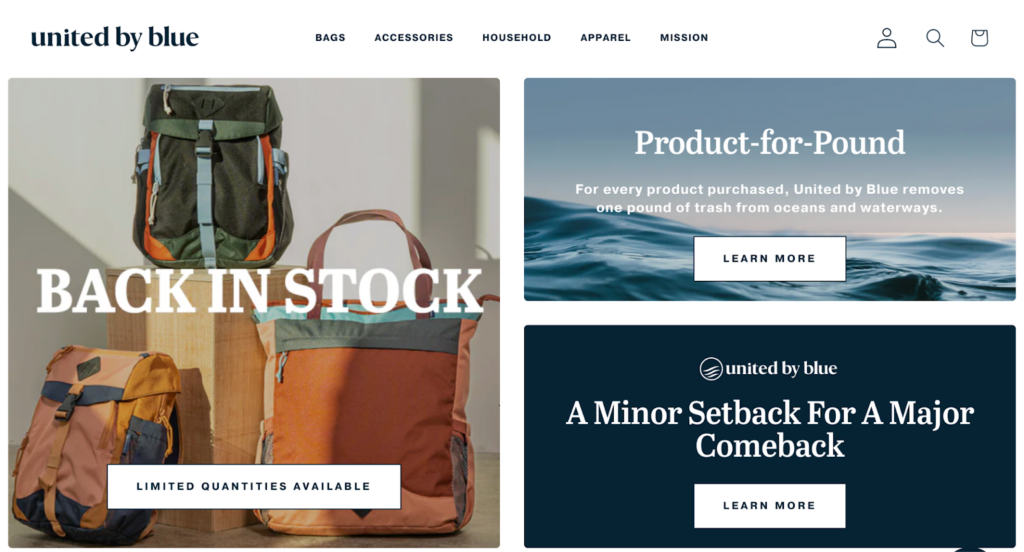
“Our hope is that through engaging cleanups, better business practices, and trash-cleaning products we can clean up the planet and the fashion industry one sustainable choice at a time. ”
United by Blue
🌎
How do they ensure their sustainability?
United by Blue ensures sustainability by designing out waste. In particular, they make durable products from sustainably sourced, low-impact materials. They also make them in factories with some of the highest social and environmental health certifications on a slow fashion timeline. Firstly, they source a high proportion of lower-impact materials. They prioritize biodegradable, regenerative fibers, recycled materials, and deadstock fabric. United by Blue’s products are also based on some of the most sustainable fabrics, including organic cotton (with GOTS and OCS certifications), recycled cotton (with GRS and OEKO-TEX® certifications), recycled wool (with RWS certification), recycled polyester (with GRS certification), recycled nylon (with GRS certification), and hemp (and SofthempTM). With high-impact fabrics like cashmere and viscose, the brand opts for the most sustainable options, including recycled cashmere and Lenzing’s EcoVero™ (a sustainably sourced viscose manufactured in a closed-loop system). Furthermore, United by Blue commits to having no single-use plastic within their packaging. Since 2022, all of their direct-to-consumer shipments have been packed in compostable poly bags, paper and cardboard boxes, and recyclable kraft tapes. Regarding their climate impact, the brand measures and reduces carbon emissions, especially in four key areas: shipments, production, energy, and stores. Their emission reduction measurements focus on reducing and consolidating shipments, transporting overseas products by boat, seeking renewable energy options, and prioritizing energy-efficient appliances, lighting, and materials in their physical stores and offices.
🌐
How do they ensure their ethics?
United by Blue binds all their suppliers with a Code of Conduct covering all of ILO’s Fundamental Principles and Rights at Work. They trace most of their supply chain and publicly share on their website their manufacturing partners, which are certified with some of the top sustainability standards (Bluesign®, Business Social Compliance Initiative Code of Conduct – BSCI, Global Organic Textile Standard,Social Accountability International – SA8000, and Worldwide Responsible Accredited Production – WRAP). Regarding animal welfare, they source wool certified by the Responsible Wool Standard, ensuring the ethical treatment of sheep in their supply chain.
🤝
Are they part of any giving-back programs?
United by Blue removes one pound of trash from oceans and waterways for every product purchased. They achieve this by organizing community, corporate, DIY, high-yield, and international cleanups.
🛍️
What is their product range?
- Best for: menswear, womenswear
- Product range: bags, wallets, blazers, beanies, scarves
- Price range: $$$
- Size range: S–XXL
BOTTLETOP: Bags Made Ethically With Upcycled, Recycled, and Certified Materials
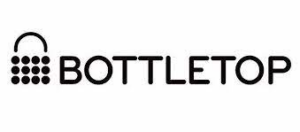

“I would always encourage people to ask the tough questions of brands that they love and would want to see improving, and for everyone to use their actual voice and their digital voice to make noise.”
Cameron Saul, Co-founder of BOTTLETOP
🌎
How do they ensure their sustainability?
BOTTLETOP ensures sustainability by sourcing a high proportion of eco-friendly materials. Specifically, they opt for upcycled and recycled materials to help tackle today’s waste problems. Their signature chain mail fabric, such as in their Amazona Mini Enamel clutch, is woven with upcycled aluminum rings collected from the streets of Brazil. BOTTLETOP also upcycles stainless steel from deconstructed illegal firearms that have been seized by local authorities in Central America. Furthermore, the brand sources food and plastic waste to create handbag materials. Regarding leather—the conventional material for luxurious handbags—BOTTLETOP ensures that they only source animal hides from sus sources food and plastic wastetainable farms and has them processed in a tannery that is rated Gold standard by the Leather Working Group (LWG). Further down the life-cycle in the manufacturing stage, BOTTLETOP reduces their energy use and climate impact by making products by hand.
🌐
How do they ensure their ethics?
BOTTLETOP traces most of their supply chain, including the final production stage, and visits their supplier regularly. Additionally, they created the first certified ‘Zero Deforestation Leather’ supply chain with the National Wildlife Federation. They have also advocated for consumers and brands in the fashion industry to demand to know the provenance of their leather. They have done this in order to help ensure both animal welfare and traceability, supporting the protection of the Amazon rainforest and other natural environments.
🤝
Are they part of any giving-back programs?
BOTTLETOP has a giving-back program through the BOTTLETOP Foundation, which supports grassroots health education charities that empower young people to protect themselves. BOTTLETOP also launched the #TOGETHERBAND campaign in partnership with the UN Foundation in 2019, with a mission to generate global awareness and action supporting the 17 UN Sustainable Development Goals. The campaign has generated over 9 billion impressions and has over 1,000 ambassadors from around the world. They now hold their atelier and training programs in Brazil and Nepal. Additionally, BOTTLETOP partners with two Nepalese organizations to support female victims of human trafficking.
🛍️
What is their product range?
- Best for: womenswear
- Product range: bags, purses, pouches, belts, bag accessories
- Price range: $$
- Size range: n/a
O My Bag: Eco-Leather Handbags Made by a Social Enterprise
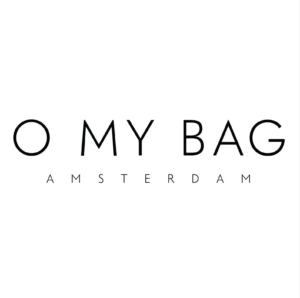
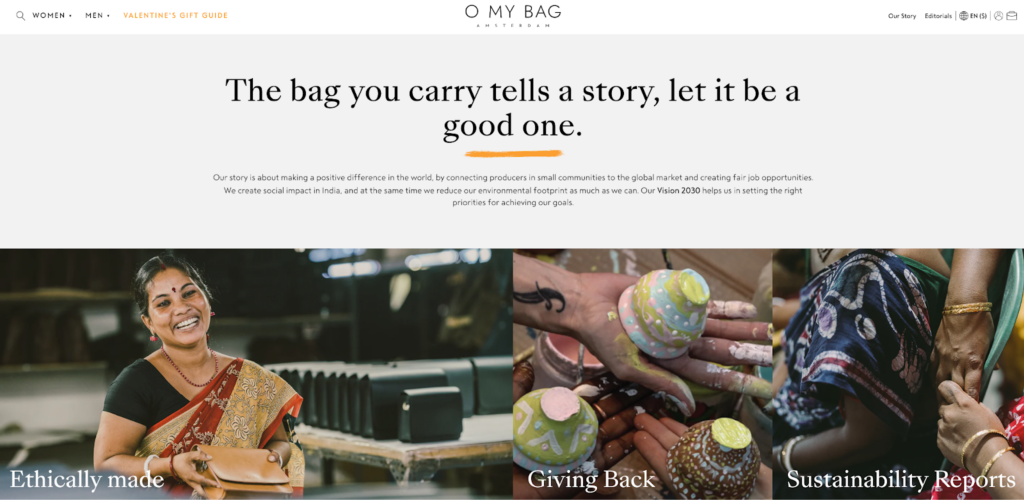
“We create social impact in India, and at the same time we reduce our environmental footprint as much as we can. ”
O My Bag
🌎
How do they ensure their sustainability?
O My Bag prioritizes sustainability by reducing and offsetting their carbon emissions. Firstly, they focus on lowering carbon emissions, which they call “in-setting”. The carbon reduction incentives include increasing sea shipments, replacing the fossil fuels used for their sea shipments with biofuels, limiting business travel, flying on sustainable aviation fuel for business trips, and searching for a more sustainable hardware producer. For example, in 2022, sea shipment accounted for 36% of their total shipment, a significant increase from 16% in 2021. Secondly, the emissions that cannot be prevented are offset in the Indian clean cooking stoves project of FairClimateFund. Additionally, O My Bag lowers their impact by opting for durable materials sourced and produced sustainably. The main textile used in their bags is premium quality leather naturally tanned without using chromium, reducing chemical and water usage in production. They also work with Leather Working Group (LWG) certified tanneries to ensure best practices in processing their raw materials. To accommodate some customers’ choice not to purchase animal products, they produce a vegan bag collection made with AppleSkinTM. O My Bag also uses low-impact GOTS-certified organic cotton and GRS-certified recycled cotton for the lining of their handbags. Regarding packaging, O My Bag orders are sent in cardboard boxes made from recycled materials and are certified by the Forest Stewardship Council (FSC). Lastly, O My Bag actively reduces waste with a Second Chance Collection, selling Perfectly Imperfect and Pre-Loved items that they take back from consumers, diverting bags away from landfills for a longer lifespan.
🌐
How do they ensure their ethics?
O My Bag ensures their ethics by committing to fair jobs and living wages. They also pay a living wage premium, which tripled from 2021 to 2022. Additionally, they bind their suppliers to a Code of Conduct that covers all of the ILO’s Fundamental Principles and Rights at Work. They also trace most of their supply chain. The final production stage is also certified by Social Accountability International – SA8000 and the WFTO Guarantee System.
🤝
Are they part of any giving-back programs?
O My Bag donates 1% of their annual revenue to social impact projects in and around Kolkata, India. These projects focus on women’s empowerment, education, and environmental innovation.
🛍️
What is their product range?
- Best for: womenswear, menswear
- Product range: bags, accessories
- Price range: $$$
- Size range: n/a
Terra Thread: Carbon-Neutral Bags Made With Organic and Fairtrade Certified Cotton
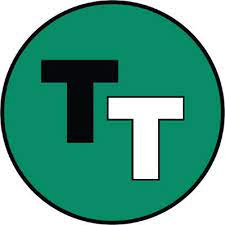
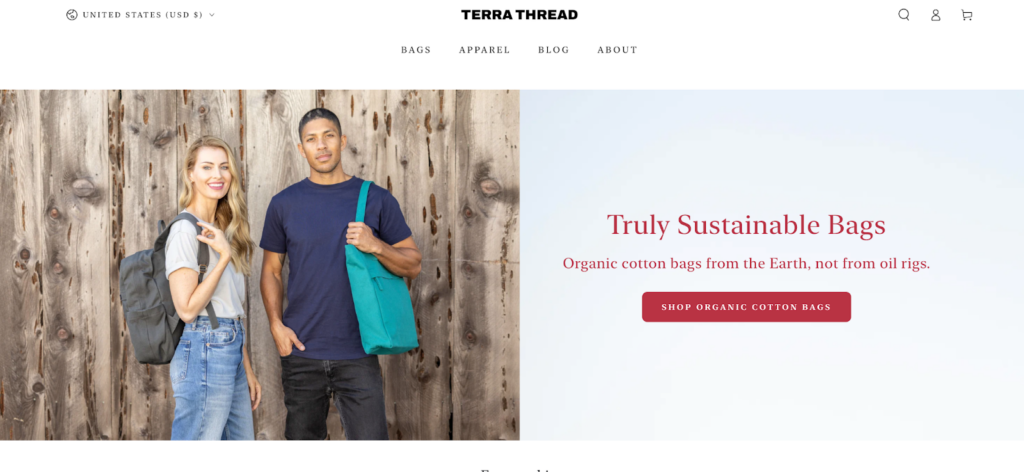
“Terra Thread backpacks, bags and apparel are created for conscious consumers, corporations and NGOs who are looking to make a positive impact on the world with their purchase. Terra Thread puts people and the planet first, every step of the way from organic farms to your arms. ”
Terra Thread
🌎
How do they ensure their sustainability?
Terra Thread ensures sustainability by sourcing exclusively organic cotton to support the transition into regenerative cotton farming. Their canvas bags’ raw materials come from smallholder and tribal families in India who primarily depend on rain-fed agriculture, reducing the water impact of using cotton. Furthermore, all their bags are produced in line with the Global Organic Textile Standard (GOTS) throughout the entire supply chain (from cotton fiber cultivation to fabric and bag production). In 2022, Terra Thread became a Regenerative Organic Certified (ROC) brand, working with their factory partners and growers to support over 700 farms to work their lands to be resilient, nutrient-rich, and self-sufficient. Their clothing line is entirely made of ROC cotton. Regarding their climate impact, Terra Thread offset all their emissions in renewable energy and reforestation and afforestation projects. On top of that, all Terra Thread bags are carbon neutral. Lastly, Terra Thread’s parent company, Gallant International, is a certified B Corporation, supplying 100% organic and fairtrade cotton products made in a fully traceable and transparent supply chain.
🌐
How do they ensure their ethics?
Terra Thread traces and audits all of their supply chain. Their organic cotton manufacturing partner is a Fairtrade International – Small-Scale Producer Organisations member, ensuring safe working conditions and empowering workers by advancing their economic development. Additionally, the brand is fully transparent about their carbon emissions and offset projects, enabling consumers to see the climate mitigation impact of the projects they are supporting with their purchase.
🤝
Are they part of any giving-back programs?
Terra Thread contributes to Feeding America’s campaign to end hunger in the US. With a matching fund from Tony Robbins, they have contributed over two million meals to people in need so far.
🛍️
What is their product range?
- Best for: menswear, womenswear
- Product range: bags, beanies, T-shirts, hoodies
- Price range: $$$
- Size range: XS–3XL
Sandqvist: Design-Led Functional Backpacks Made Ethically

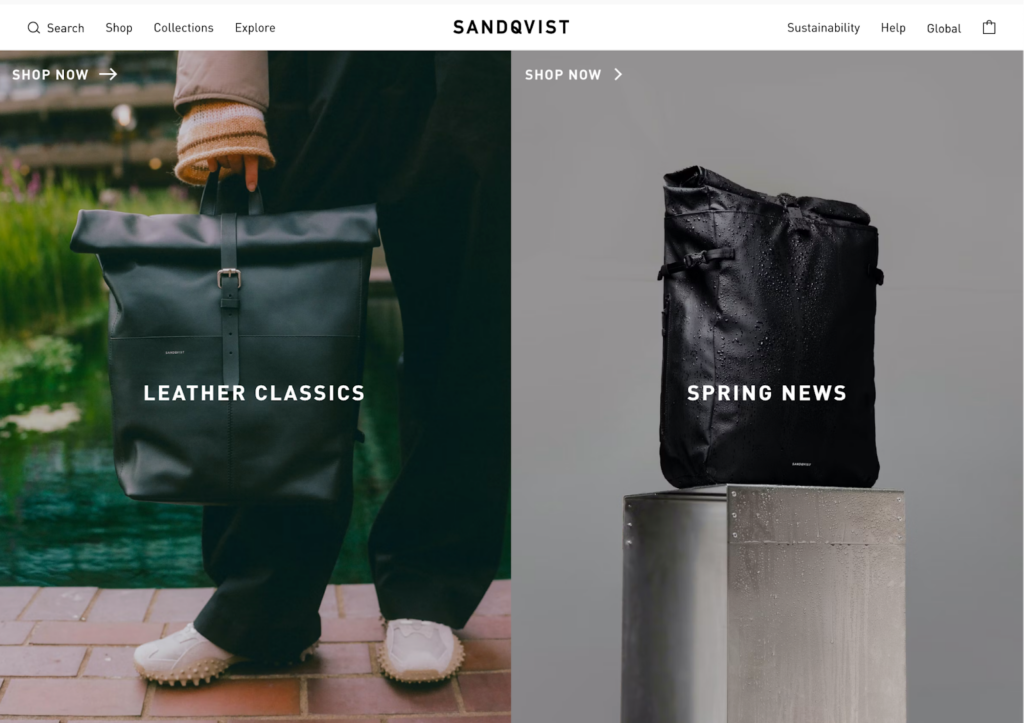
“We place focus on challenging the role of functionality in design and practicing both sustainability and respect for the environment at all times, without compromising aesthetics.”
Sandqvist
🌎
How do they ensure their sustainability?
Sandqvist ensures sustainability by strictly controlling their chemical usage, reducing carbon emissions, and lowering their water impact. Firstly, all of Sandqvist’s canvas products are constructed from organic cotton treated with substances and dyes approved for organic materials, avoiding harmful synthetic chemicals. Regarding leather—the conventional material for luxury bags—Sandqvist sources traceable and responsibly produced animal hides from Scandinavian cattle bred for dairy and meat production and has them processed at tanneries audited gold or silver by Leather Working Group (LWG), ensuring the strict management of chemicals used in tanning leather. Regarding their carbon emissions, in 2021, they cut their carbon emissions by 26% thanks to minimizing air freights of goods, moving to 3D sampling, and streamlining their ordering process. Sandqvist also uses recycled polyester and recycled nylon instead of virgin fossil-based synthetic fabrics, which have a much higher carbon footprint. Lastly, Sandqvist minimizes their water impact by strictly controlling the chemicals used throughout their supply chain, ensuring chemical management of their suppliers is in keeping with best practices and that water is conserved at all steps of production.
🌐
How do they ensure their ethics?
Sandqvist ensures their ethics by being transparent about their supply chain. They publicly share their manufacturing partners on their website, which are audited and certified with some of the top sustainability standards (Fair Wear Foundation, International Labour Organisation‘s (ILO) Better Works, BSCI, Social Accountability International – SA8000, SMETA). Sandqvist also has a Code of Conduct signed by most of their suppliers, which covers all of the ILO’s Fundamental Principles and Rights at Work.
🤝
Are they part of any giving-back programs?
Sandqvist is not known to be part of any giving-back programs.
🛍️
What is their product range?
- Best for: menswear, womenswear
- Product range: backpacks, briefcases, tote bags, shoulder bags, fanny packs, wallets, travel bags, laptop cases, travel accessories, bag accessories
- Price range: $$$
- Size range: n/a
BEEN London: Timeless Bags From Recycled Leather Offcuts and Plastic Bottles
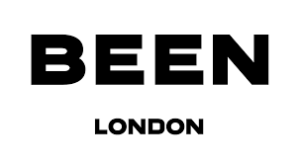
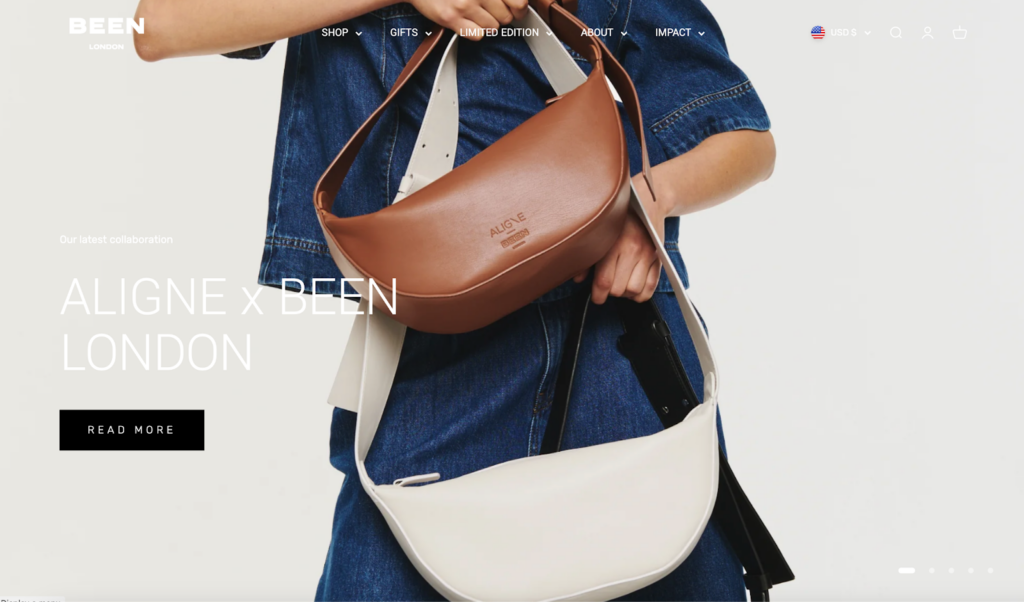
“We make versatile, timeless accessories from discarded materials that would otherwise go to landfill. In doing so, we are shifting the narrative around waste, showing what is possible with new innovations, and doing our part to protect nature.”
BEEN London
🌎
How do they ensure their sustainability?
BEEN London’s sustainability efforts focus on circularity. They start with reverting waste away from landfills and into making clothing accessories. BEEN London also uses a high proportion of low-impact materials, including GRS-certified recycled materials from post-consumer plastic bottles, fishing nets, plant-derived waste, used textiles, and leather offcuts and trimmings. Specifically, they source recycled leather, recycled nylon, recycled polyester, recycled cotton, and recycled felt. Additionally, they have some bags made with vegan leather alternatives, including Piñatex and AppleSkinTM, made with agricultural and industry waste. Beyond sourcing, BEEN London also considers circularity in every decision. Specifically, they strive to limit the amount of waste they create through their design process, such as opting to make mostly rectangular bags with which they can achieve near zero offcuts. Any offcuts that are created in the production process are collected and recycled. Furthermore, they design durable, versatile, seasonless, timeless pieces that consumers will still want to wear year after year. BEEN London also helps extend product lifespan by offering repairs and incentivizing end-of-life recirculating. The design of their bags also covers end-of-life recycling, meaning that they preempt the dismantling challenges by stitching the lining to bags, using water-soluble glues, or even leaving their bags unlined. When reuse and repair are no longer an option, customers can send their bags back to BEEN London, where they will be dismantled for material recycling. Lastly, BEEN London strives to reduce their climate impact by opting for sea freight and offering zero-emission London delivery.
🌐
How do they ensure their ethics?
BEEN London makes everything locally in East London to ensure the highest level of transparency. They also trace all of their supply chain and visit their suppliers regularly.
🤝
Are they part of any giving-back programs?
BEEN London gives back by planting trees in the Amazon rainforests. They plant a tree for every leather item in the color Rainforest Green ordered and sold. The impact of their reforestation efforts is tracked via Forest of BEEN London on their partner platform, Tree-Nation. Additionally, BEEN London supports Smart Works, a charity that gives women the confidence they need to reach their full potential by incentivizing customers to bring or mail (pre-paid) their pre-loved bags from any brand for recirculating.
🛍️
What is their product range?
- Best for: womenswear
- Product range: backpacks, handbags, satchels, totes, wallets, purses
- Price range: $$$
- Size range: n/a
Nisolo: Carbon-Neutral Handbags From an Accountable and Transparent Brand

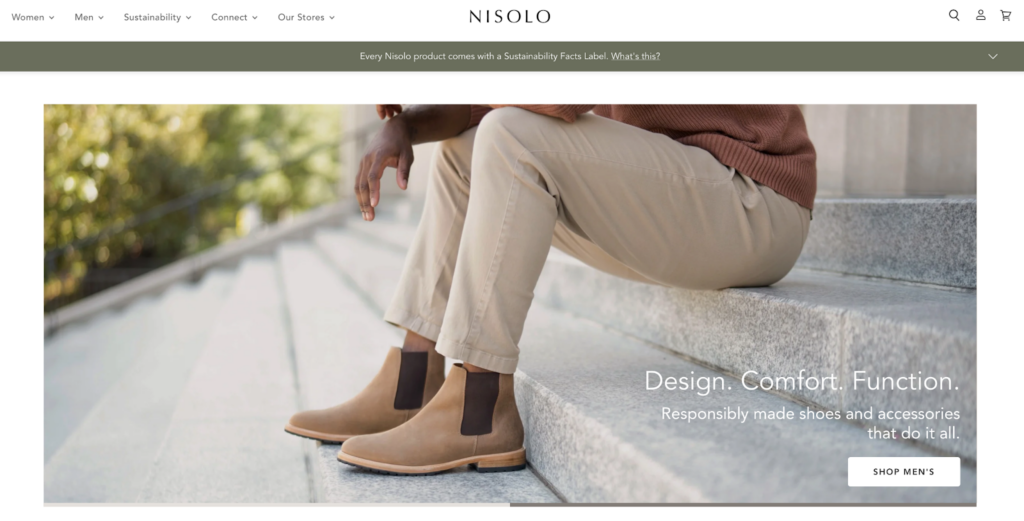
“As a brand focused on sustainability, we’re far from perfect. To hold ourselves more accountable in hopes the industry will begin to do the same, we’re raising the bar for transparency to an unprecedented level. ”
Nisolo
🌎
How do they ensure their sustainability?
Nisolo ensures their sustainability by reducing their impacts while working toward fixing the fashion industry. They focus on five critical areas: a living wage for all workers, net zero carbon emissions, transparency, accountability, and collaboration. Specifically, they aim to reach a balance between their carbon emissions and offsets. Firstly, Nisolo strives to reduce their carbon emissions throughout the life-cycle of their leather footwear and accessories. They opt for recycled and upcycled materials, sourcing synthetic materials made from recycled water bottles and leather as an economic by-product of the meat industry. Further down the life-cycle in the manufacturing stage, they use renewable energy for a significant percentage of their production. At the end of the product’s life-cycle, they facilitate recycling and responsible disposal through their takeback program with Soles4Souls, further reducing the life-cycle’s environmental impacts. Since 2018, Nisolo has offset all the carbon emissions that they haven’t managed to cut by partnering with Ecosphere+ to invest in forest conservation in the Peruvian Amazon—an offsetting project verified by Climate Neutral. Lastly, they are a carbon-neutral certified brand.
🌐
How do they ensure their ethics?
Nisolo ensures their ethics by upholding all their 1st tier factories to their Supplier Code of Conduct, which covers all of the ILO’s Fundamental Principles and Rights at Work. They ensure that every producer in their 1st tier factories is paid a living wage by monitoring individual living wages and tracking suppliers’ lowest wages. Nisolo also monitors health and safety issues with an internal procedure. Moreover, they are fully transparent about their impacts with their sustainability facts labels so that consumers can see the carbon footprint and the workforce involved with each product they purchase. Regarding animal welfare, Nisolo is a member of the Leather Working Group, which promotes sustainable environmental practices in the leather industry.
🤝
Are they part of any giving-back programs?
Nisolo founded The Lowest Wage Challenge in collaboration with another fashion label, ABLE, to challenge brands to share their lowest wages and strive toward paying their workers a living wage throughout their supply chains.
🛍️
What is their product range?
- Best for: menswear, womenswear
- Product range: shoes, bags, wallets, belts, socks, accessories
- Price range: $$$
- Size range: S–L
Lefrik: High-Performance Bags Made From Recycled Plastic Bottles

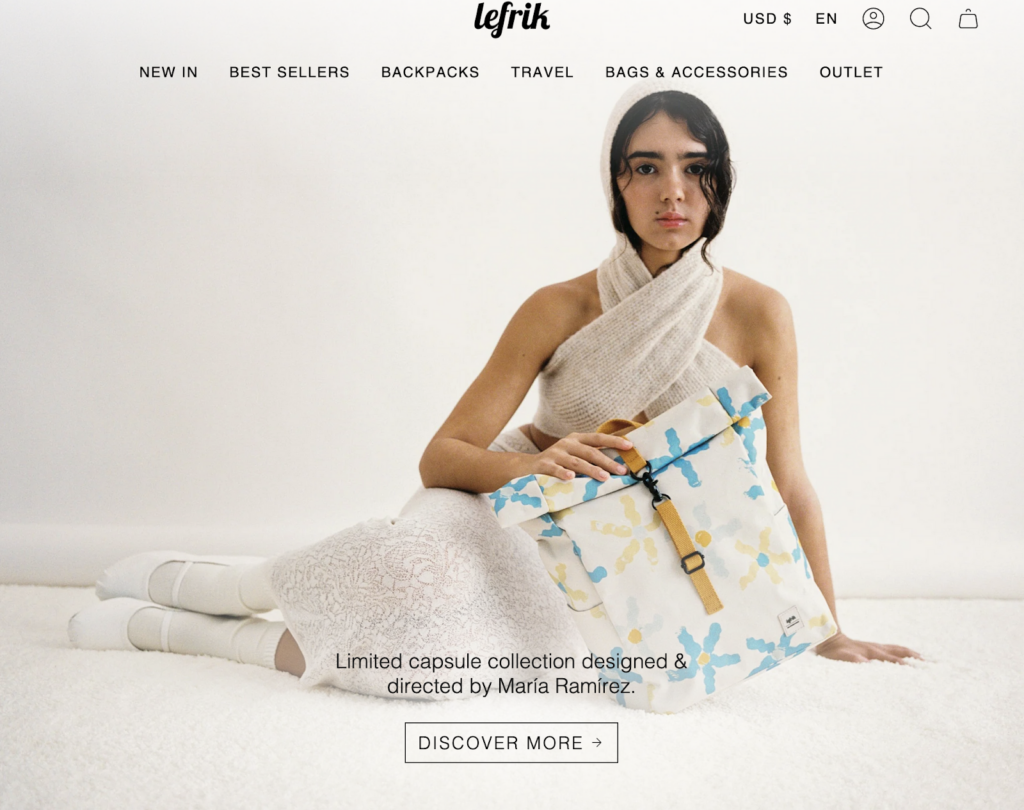
“At Lefrik, sustainability and timeless design are not just words but integral parts of our core values. Our goal is to create products that are practical, functional, and environmentally responsible, and that you can use for years to come.”
Lefrik
🌎
How do they ensure their sustainability?
Lefrik ensures sustainability by reducing waste and minimizing carbon emissions. Firstly, they source 100% recycled polyester fibers from discarded plastic bottles, contributing to plastic waste reduction while lowering the carbon footprint compared to using virgin polyester. In 2022, the brand recycled approximately 2,430,000 1.5L plastic bottles. Lefrik is also a GRS-certified brand. Additionally, their entire collection is based on only 5 varieties of rPET, enabling efficient material consumption during the production stage and ease of recycling at the end-of-life stage. Lefrik also reduces packaging waste by replacing recycled cardboard boxes with compostable corn-based carbon-negative biodegradable bags. Secondly, they minimize their transporting emissions by prioritizing sea freight and strictly avoiding air shipments. Lastly, they create durable products and offer repair services to extend the life of their bags, reducing the life-cycle environmental impact.
🌐
How do they ensure their ethics?
Lefrik has a Code of Conduct covering four of the ILO’s Fundamental Principles and Rights at Work. They are transparent about their suppliers, certified and audited by credible sustainability and social standards, including the Business Social Compliance Initiative – BSCI, Sedex Members Ethical Trade Audit – SMETA Best Practice Guidance, and Social Accountability International – SA8000.
🤝
Are they part of any giving-back programs?
Lefrik is a member of 1% for the Planet, committing to donating 1% of their yearly revenues to fantastic organizations that put the planet first. Such organizations include the Jane Goodall Institute, Healthy Sea, Chelonia Association, and Fundacio Miranda.
🛍️
What is their product range?
- Best for: menswear, womenswear
- Product range: backpacks, totes, shoulder bags, accessories
- Price range: $$
- Size range: one size
Sealand: Weather Resistant Backpacks Made From Upcycled and Responsibly Sourced Materials
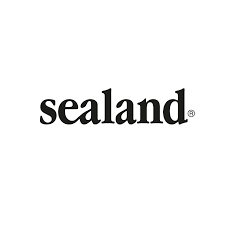
“Through environmentally efficient material selection, innovative design and product durability, we have sought to both slow down the rate of consumption and reduce the environmental damage caused by production.”
Sealand
🌎
How do they ensure their sustainability?
Sealand ensures sustainability by sourcing a high proportion of eco-friendly materials and achieving net zero carbon via reducing and offsetting emissions. Firstly, they lower their sourcing environmental impacts by combining three categories of low-impact textiles: upcycled fabrics, durable natural fabrics, and recycled fabrics (ECONYL® Regenerated Nylon). Specifically, they upcycle yacht sails, poly twill, spinnaker, and canvas. Sealand also uses hemp and CmiA-certified cotton (cultivated from rainwater-fed, non-GMO crops in sub-Saharan Africa). Regarding their carbon footprint, they partner with The Green House to measure their emissions. The calculations show that Sealand’s upcycled canvas and yacht sail bags are 99% more carbon efficient than a bag made from virgin canvas. Additionally, the brand has purchased carbon credits from Credible Carbon to offset all the emissions resulting from producing their gear. They also implement a carbon credit management system that tracks carbon emissions and credits.
🌐
How do they ensure their ethics?
Sealand traces most of their supply chain and visits their suppliers regularly. They state that they pay a living wage, which is, on average, 40% higher than the South African living wage.
🤝
Are they part of any giving-back programs?
Sealand pledges, in partnership with 1% for the Planet, to donate 1% of their sales to address key environmental challenges and disparities that exist in their socio-economic context. Specifically, they support Sentinel Ocean Alliance (SOA) to provide environmental education, ocean stewardship, and conservation in Sealand’s direct environment, Hout Bay. Additionally, they donate an upcycled bag to an aligned initiative for every online order over R1,500 ($80 USD).
🛍️
What is their product range?
- Best for: menswear, womenswear
- Product range: shoes, bags, wallets, belts, socks, accessories
- Price range: $$$
- Size range: n/a
Elvis & Kresse: Luxurious Handbags Made From Rescued Materials

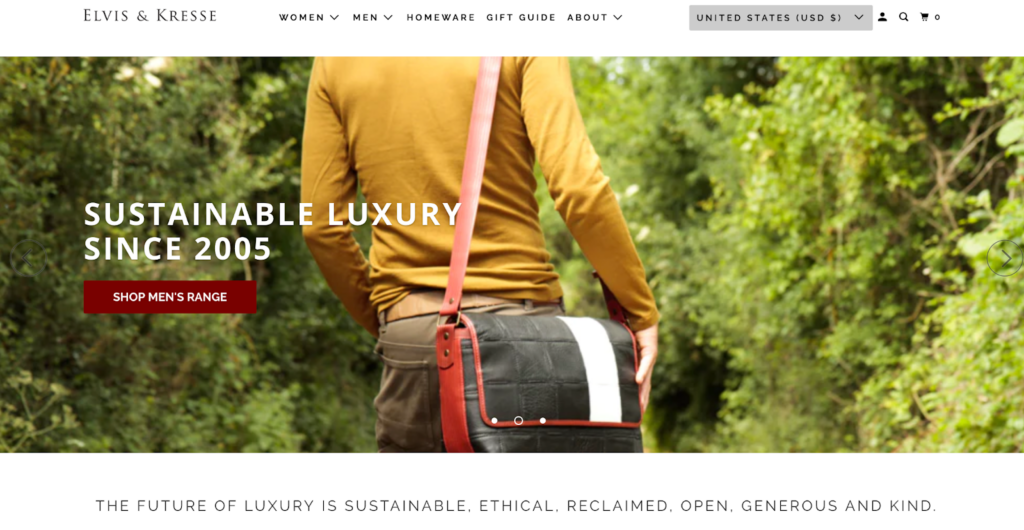
“We create stunning lifestyle accessories by transforming seemingly useless wastes and combining them with highly skilled, traditional craftsmanship.”
Elvis & Kresse
🌎
How do they ensure their sustainability?
Elvis & Kresse prioritizes sustainability by sourcing eco-friendly materials. Their collection is made with rescued materials, originally from London’s decommissioned fire hoses and later from the fashion industry’s leather offcuts. The brand collects 15 different waste streams to make their products, including fire hoses, parachutes (for silk), printing blankets, leather offcuts, coffee sacks, shoe boxes, tea sacs, and auction banners, to name a few. For example, the exterior of their Fire & Hide Class Tote is made with a combination of rescued leather and genuine decommissioned British fire hoses, with the lining made from reclaimed textile from Burberry Mills and the handles made with genuine decommissioned British fire hoses. This same tote is also packaged in a reclaimed parachute silk bag. Further down the life-cycle in the manufacturing stage, Elvis & Kresse makes all their products by hand, reducing their climate impact.
🌐
How do they ensure their ethics?
Elvis & Kresse traces all of their supply chain and ensures payment of a living wage in some of their suppliers.
🤝
Are they part of any giving-back programs?
Elvis & Kresse donates 50% of profits from their Fire-Hose Range to The Fire Fighters Charity. They also make monetary donations to various organizations, including Barefoot College, WWF, Help for Heroes, Comic Relief, and the British Forces Foundation. Through an initiative in which they made shopping bags for the British supermarket chain Sainsbury’s from old coffee sacks, they have also donated to projects that support coffee growers via CafeDirect, the Costa Foundation, David Williamson Rwanda Foundation, Bettys, Taylors, and Union Hand Roasted.
🛍️
What is their product range?
- Best for: womenswear, menswear
- Product range: bags, wallets, belts, laptop cases, laptop bags, notebooks, pencil cases, cufflinks, wrist bands
- Price range: $$$
- Size range: XS–XL
Cotopaxi: An Outdoor Brand Working to Alleviate Global Poverty


“To prioritize sustainability for both people and planet, we consider every phase of a product’s lifecycle, including partnering with factories that treat workers right, sourcing sustainably minded materials, and making durable gear that lasts.”
Cotopaxi
🌎
How do they ensure their sustainability?
Cotopaxi ensures sustainability by designing their products and sales orders in a way that creates as little waste as possible. In 2022, 98% of their products contained repurposed, recycled, or responsible materials. Cotopaxi’s eco-preferred fibers include recycled fibers (cotton, wool, cashmere, polyester, nylon), organic fibers (cotton, linen, hemp ,silk), TENCELTM Lyocell, and wool that is certified to the Responsible Wool Standard. They also prioritize products that are timeless and durable while offering customers pathways to repair, resell, and return their products, promoting slow-fashion principles to avoid overconsumption and unnecessary waste. As of 2022, Cotopaxi has eliminated all single-use plastic packaging from their entire supply chain. Additionally, Cotopaxi monitors, measures, and reports on their material environmental impacts, including all greenhouse gas (GHG) emissions, to reduce and responsibly offset their entire carbon footprint. Cotopaxi also works with Pachama and BEF to purchase carbon offsets from verified and vetted projects. Last but not least, they request water usage measurement and water reduction targets from their Tier 1 and Tier 2 suppliers in order to reduce their overall water impact.
🌐
How do they ensure their ethics?
Cotopaxi has a Code of Conduct covering all of the ILO’s Fundamental Principles and Rights at Work. They also trace most of their supply chain and visit their suppliers regularly. Additionally, they ensure payment of a living wage in some of their supply chain.
🤝
Are they part of any giving-back programs?
Giving back is at the core of Cotopaxi’s operation. The Cotopaxi Foundation, founded in 2018, provides grants to nonprofits that help communities facing extreme poverty, including but not limited to organizations that provide healthcare, facilitate education, promote gender equality, and respond to humanitarian crises. Cotopaxi also became a member of 1% for the Planet in 2022, committing to donate 1% of sales to causes that support a healthier planet for all.
🛍️
What is their product range?
- Best for: menswear, womenswear, kidswear
- Product range: backpacks, travel bags, day bags, hip bags, bag accessories, jackets, vests, bottoms, T-shirts, hoodies, sweatshirts, activewear, accessories
- Price range: $$
- Size range: XS–3XL
GROUNDTRUTH: Innovative Backpacks Made With 100% Recycled Plastics

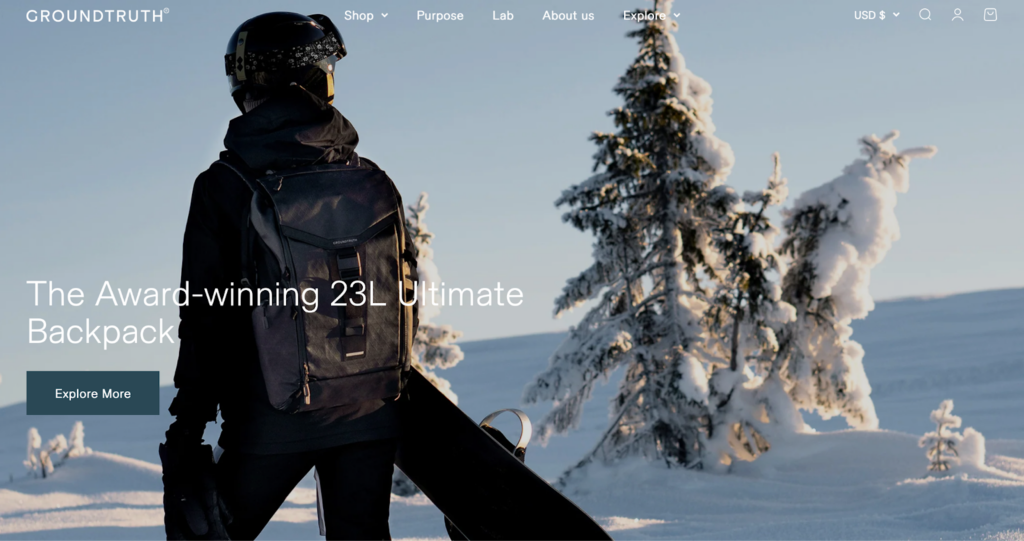
“We have hand built our ecosystem of partners who share both our values and vision for the future. Grounded in relationship building, we have forged strong partnerships for our bag manufacturing and our material development. We film and document every step to ensure we can be as transparent as possible.”
GROUNDTRUTH
🌎
How do they ensure their sustainability?
GROUNDTRUTH ensures sustainability by sourcing a high proportion of recycled fabrics to make their backpacks. In particular, they use recycled yarns with the Global Recycle Standard (GRS) certification made in Bluesign® facilities in Taiwan. For example, the exterior main body of their RIKR 10L Tote Pack is made with 100% rPET, while the lining is made with 100% GRS-certified recycled fishing net, and the padding is made with BLOOM’s algae-based foam, an eco replacement for traditional petroleum-based EVAs. GROUNDTRUTH also sources biodegradable packaging to further reduce waste and environmental impacts. Regarding their climate impact, the brand offsets their entire carbon footprint in Wildlife Works‘ Mai Ndombe project, located in the Democratic Republic of the Congo, which protects over 740,000 acres of the world’s second-largest rainforest. Furthermore, GROUNDTRUTH has partnered with Oco to develop a formula where they combine captured CO2 emissions within recycled polypropylene, one of the most abundant types of microplastics found in our oceans. They have used the formula to create a one-of-a-kind range of hardware, GT-OCO-CO2®, featured on all their bags and acting as a carbon sink. What’s more, GROUNDTRUTH creates products that are built to last with advanced textiles and the highest quality of manufacturing. Each new design is field-tested in the environment. For example, the RIKR range was tested in Antarctica by polar explorer and environmentalist Robert Swan OBE. Last but not least, GROUNDTRUTH’s backpacks come with a 10-year warranty.
🌐
How do they ensure their ethics?
GROUNDTRUTH traces most of their supply chain and visits their suppliers. As well, a high percentage of their manufacturing partners are certified by Bluesign®. Specifically, their backpacks are made by a family-run Bluesign®-certified manufacturer in Jakarta, which offers shorter hours, access to training, healthcare, education for the children of the textile workers, and gender pay equality.
🤝
Are they part of any giving-back programs?
GROUNDTRUTH is not known to be part of any giving-back program.
🛍️
What is their product range?
- Best for: womenswear, menswear
- Product range: backpacks, travel kits, accessories
- Price range: $$$
- Size range: n/a
Mariclaro: Bags and Accessories From Repurposed Materials

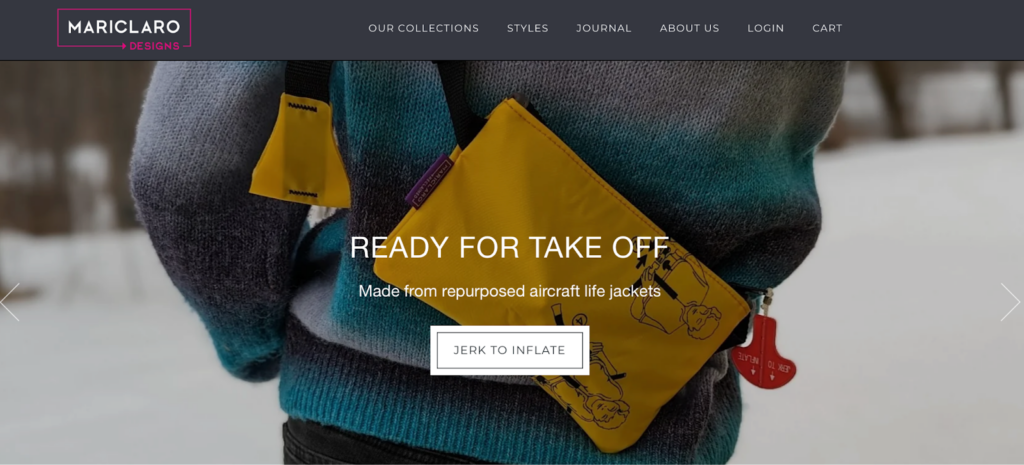
“We understand upcycling as a creative process of transforming discarded materials into contemporary and beautiful designs.”
Mariclaro
🌎
How do they ensure their sustainability?
Mariclaro ensures sustainability by repurposing waste materials to make bags and accessories. They specialize in working with automotive and aviation materials, transforming classic luxury car interiors and leather aircraft seats into unique bags, wallets, and passport cases. Further down the life-cycle in the manufacturing stage, they make their products by hand and locally in Canada to reduce their climate impact. Additionally, Mariclaro has a limited production run to minimize textile waste.
🌐
How do they ensure their ethics?
Mariclaro sources the waste materials that they use to make their products themselves and tries to trace back the origin of the material as best they can. Finally, their products are manufactured in-house.
🤝
Are they part of any giving-back programs?
Mariclaro is not known to be part of any giving-back programs.
🛍️
What is their product range?
- Best for: menswear, womenswear
- Product range: laptop bags, briefcases, handbags, backpacks, messenger bags, weekender bags, wallets, passport cases
- Price range: $$$
- Size range: one size
WOUF: High-Quality, Sustainable Bags to Celebrate Daily Adventures

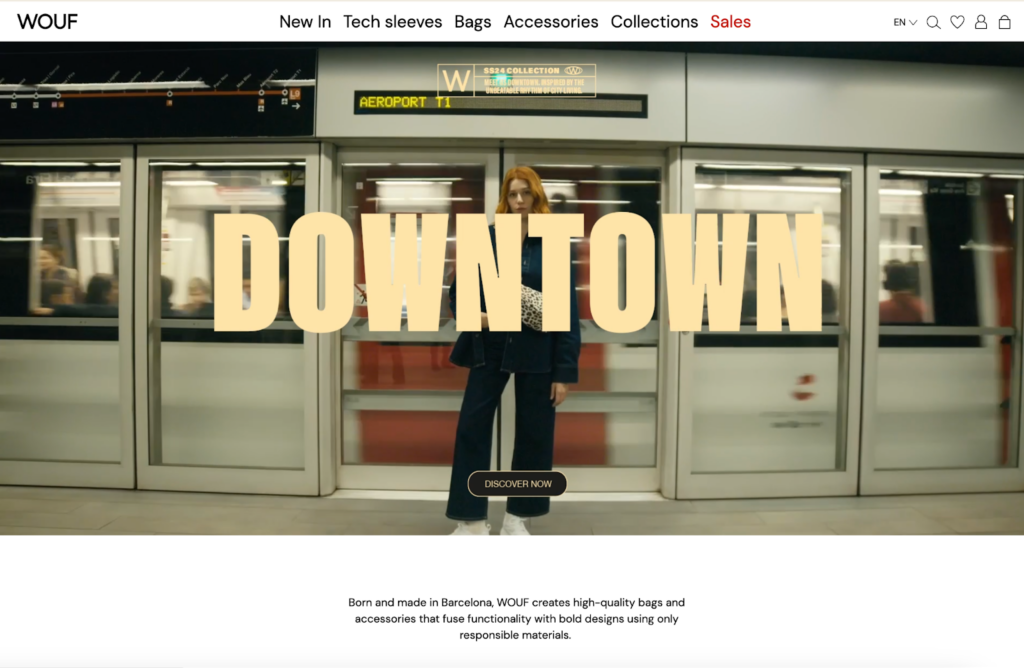
“We design products that are made to last, minimising material waste during production. ”
WOUF
🌎
How do they ensure their sustainability?
WOUF ensures sustainability by using exclusively responsible materials for their bags and accessories. Specifically, 88% of their textiles are recycled fabrics made from post-consumer plastic bottles. They use 70% less energy, 75% less CO2, and 86% less water than synthetic fabrics from virgin fossil-based raw materials. Additionally, WOUF sources cotton fabrics exclusively from certified organic farms. Further down the life-cycle in the manufacturing stage, they produce their bags and accessories locally in Barcelona, also close to their suppliers, to minimize their transportation carbon footprint. Half of their products are made in their factory, which is thermally insulated to reduce the need for heating and air conditioning and runs on 70% self-generated solar energy. Additionally, their fabrics are printed with OEKO-TEX® certified inks, guaranteeing rigorous testing for harmful chemicals. Regarding packaging, WOUF opts for FSC-certified paper hang tags and recycled plastic outer bags. Lastly, they design long-lasting products that suit many occasions to avoid unnecessary waste.
🌐
How do they ensure their ethics?
WOUF traces most of their supply chain. Their last production stage is in Spain, a medium-risk country for labor abuse. They also make 50% of their products in their own factory, incorporating advanced sustainability practices and utilizing technology to minimize production waste while offering a comfortable and inviting workspace for their dedicated production team.
🤝
Are they part of any giving-back programs?
WOUF is not known to be part of any giving-back programs.
🛍️
What is their product range?
- Best for: womenswear
- Product range: bags, tech sleeves, wallets, hats, scarves, accessories
- Price range: $$$
- Size range: one size
Why Is It Important to Buy Products Made of More Sustainable Fabrics
It is important to buy products made of more sustainable fabrics because a sustainable textile industry has a lower carbon footprint, helps save natural resources, and is better for forests, animals, and humans.
Buying Sustainable Fabrics Reduces Your Carbon Footprint
The production of clothing and footwear is estimated to contribute 10% of global greenhouse gas emissions—more than all international flights and shipping combined. If the fashion industry were a country, it would be the fourth largest emitter of carbon dioxide.
One way to reduce the carbon footprint of the clothes you buy is to opt for sustainable fabrics. Sustainable fabrics, which are often made with natural or recycled fibers, have relatively low carbon footprints compared to petroleum-based fabrics. For example, organic cotton made in the US has a carbon footprint of 2.35 kg CO2 (per ton of spun fiber)—a quarter of polyester’s carbon footprint.
Buying Sustainable Fabrics Reduces Demand For Natural Resources and Waste Management
The textile industry uses water and land to grow cotton and other fibers. It is estimated that 79 billion cubic meters of water were used for the sector worldwide in 2015. For example, producing a single cotton T-shirt requires as much water as one person drinks for 2.5 years (2,700 liters of fresh water).
Worse yet, the textile economy is vastly more linear than circular: the largest amount of resources used in clothes ended up in landfill (instead of being recycled to remake clothes). According to a report by the Ellen MacArthur Foundation,
- Less than 3% of materials used in the textile economy in 2015 came from recycled sources.
- In other words, more than 97% of resources used in making clothes are newly extracted.
When clothing items are disposed of within a short period of time—under a year in the case of half of the fast fashion clothes—the natural systems that provide raw materials for fabrics don’t have enough time to recover and regenerate, which could lead to ecological breakdown.
Sustainable fabrics are made with less water and emissions while lasting longer:
- Because they are durable, you don’t need to buy new clothes too often.
- Thus, you help reduce the pressure to extract more resources for making new items.
Similarly, making and consuming sustainable fabrics made with recycled materials reduces the demand for virgin materials while helping tackle waste management.
Buying Sustainable Fabrics Encourages Sustainable Management of Forests
Sustainable natural fiber fabrics are made with raw materials from forests and plantations that are sustainably managed, such as complying with FSC standards.
When you buy sustainable natural fiber fabrics, you discourage unsustainable forestry practices like illegal logging. You can help reduce deforestation, biodiversity loss, and the effects of climate change.
Buying Sustainable Fabrics Encourages Fairer Treatment of Animals
The fashion industry is rife with animal mistreatment when it comes to making animal-based fabrics like wool or silk. Every year, billions of animals suffer and die for clothing and accessories.
Buying sustainable vegan alternatives can help to reduce the pressure on raising more and more animals to meet the demand for animal-based fabrics while sacrificing their well-being and lives.
Suppose you have to buy fabrics made with, for example, wool or silk; make sure you only choose brands committed to cruelty-free products. In that case, you help advocate better treatments for animals raised within the textile industry.
Using Sustainable Fabrics Encourages Fairer Treatment of Textile Workers
Recent statistics from UNICEF estimated as many as 170 million child laborers worldwide, many of whom were engaged in some form of work in the textile industry. They don’t get paid minimum wages and often work long hours.
When you buy sustainable fabrics from brands that are transparent about the working conditions at their factories, you discourage the use of child labor and help promote better working conditions for textile workers.
How Can You Generally Buy More Sustainable Fabrics
The key to sustainably buying fabrics is to check on relevant environmental and original certifications.
For natural fabrics:
- Global Organic Textile Standard (GOTS): A globally recognized certification system that ensures a certain threshold of organic content has been met. It covers manufacturing, packaging, labeling, transportation, and distribution (but not what happens in the fields where crops are grown).
- USDA Certified Biobased Product: The USDA BioPreferred® Certification is a voluntary certification offered by the United States Department of Agriculture. The certification identifies products made from plants or other renewable materials.
- Ecolabel: Ecolabel is the official European Union voluntary label recognized worldwide for certified products with a guaranteed, independently verified low environmental impact. The label requires high environmental standards throughout the entire life-cycle: from raw material extraction through production and distribution to disposal. It also encourages companies to develop innovative, durable, easy-to-repair, and recyclable products.
For natural fiber semi-natural/semi-synthetic fabrics:
- Forest Stewardship Council: An FSC certification ensures that the wood (or wood-like material) comes from responsibly managed forests that provide environmental, social, and economic benefits.
There are two types of FSC Certification:- FSC Forest Management Certification, with a focus on the origin of the wood—the forest.
- FSC Chain of Custody Certification, which focuses on the path from the forest to the customer’s home.
- Program for Endorsement of Forest Certification: PEFC’s approaches to sustainable forest management are in line with protecting the forests globally and locally and making the certificate work for everyone. Getting a PEFC certification is strict enough to ensure the sustainable management of a forest is socially just, ecologically sound, and economically viable but attainable not only by big but small forest owners.
For recycled fabrics:
- Recycled Claim Standard (RCS): The Textile Exchange RCS was originally developed as an international, voluntary standard that sets requirements for third-party certification of Recycled input and chain of custody.
- The Global Recycled Standard (GRS): The Global Recycled Standard (GRS) is an international, voluntary, full product standard that sets requirements for third-party certification of Recycled Content, chain of custody, social and environmental practices, and chemical restrictions. It can be used for any product with more than 20% recycled material.
For all types of fabrics:
- STeP by OEKO-TEX®: STeP by OEKO-TEX® is an independent certification system for brands, retailers, and manufacturers from the textile and leather industry. It communicates organizational environmental measures, including reducing carbon footprint and water usage.
- OEKO-TEX® Standard 100: OEKO-TEX® labels aim to ensure that products pose no risk to human health (i.e., containing banned chemicals).
Some certifications that are signaling brands’ efforts toward lowered environmental impacts and a circular economy are:
- B Corp Certification: The label B Corp is a certification reserved for for-profit companies. Certified holders are assessed on their social and environmental impacts.
- Cradle2Cradle certification: Cradle2Cradle provides a standardized approach to material circularity. It assesses whether products have been suitably designed and made with the circular economy in mind covering five critical categories: material health, material reuse, renewable energy and carbon management, water stewardship, and social fairness.
Final Thoughts
Bags can be one of the higher impact and less sustainable clothing accessories due to their conventional use of high-impact fabrics like leather, cotton canvas, or nylon. Thus, it is important to shop with ethics and sustainability in mind when choosing your next bag.
By purchasing new or pre-loved bags from brands that commit to sustainability, you support their mission to create a fairer and less harmful textile industry for all lives on Earth.
Here is the list (again) of the most sustainable handbag brands:
- HYER GOODS
- United by Blue
- BOTTLETOP
- O My Bag
- Terra Thread
- Sandqvist
- BEEN London
- Nisolo
- Lefrik
- Sealand
- Elvis & Kresse
- Cotopaxi
- GROUNDTRUTH
- Mariclaro
- WOUF
To make your use of these clothing accessories even more sustainable, follow these steps:
- Buy second-hand, recycled, or upcycled bags made with low-impact materials.
- Keep your bags as long as possible.
- At the end-of-life of your bags, upcycle the materials to extend their usage and arrange for them to be recycled or properly disposed of.
Stay impactful,

Sources
- Impactful Ninja: How Sustainable Are Leather Fabrics? A Life-Cycle Analysis
- Impactful Ninja: How Sustainable Are Synthetic Fabrics? A Life-Cycle Analysis
- Impactful Ninja: How Sustainable Are Canvas Fabrics? A Life-Cycle Analysis
- Impactful Ninja: How Sustainable Are Cotton Fabrics? A Life-Cycle Analysis
- Science Direct: Life-cycle assessment (LCA)
- Hyer Goods: Home
- United by Blue: Home
- BOTTLETOP: Home
- O My Bag: Home
- Terra Thread: Home
- Sandqvist: Home
- BEEN London: Home
- Nisolo: Home
- Lefrik: Home
- Sealand: Home
- Elvis & Kresse: Home
- Cotopaxi: Home
- GROUNDTRUTH: Home
- Mariclaro: Home
- WOUF: Home
- HYER GOODS: Bags
- HYER GOODS: Luxe Mini Bucket Bag
- HYER GOODS: Our Materials
- HYER GOODS: Luxury Leftovers
- HYER GOODS: Deadstock Leather Collection
- Impactful Ninja: How Sustainable Are Wool Fabrics? A Life-Cycle Analysis
- Impactful Ninja: How Sustainable Are Canvas Fabrics? A Life-Cycle Analysis
- HYER GOODS: Carbon Neutrality
- Good On You: Brand Directory | HYER GOODS
- HYER GOODS: Our Monthly Mission
- Malala Fund: Home
- WHO: Home
- No Kid Hungry: Home
- The Okra Project: Home
- B Corporation: United by Blue
- United by Blue: Our Story
- Good On You: Brand Directory | United by Blue
- United by Blue: Materials
- United by Blue: The SoftHemp™ Collection
- Impactful Ninja: How Sustainable Are Recycled Fabrics? A Life-Cycle Analysis
- Impactful Ninja: How Sustainable Are Organic Cotton Fabrics? A Life-Cycle Analysis
- Global Organic Textile Standard: Home
- Textile Exchange: Organic Content Standard
- Impactful Ninja: How Sustainable Are Recycled Cotton Fabrics? A Life-Cycle Analysis
- Textile Exchange: Global Recycle Standard
- OEKO-TEX: Home
- Impactful Ninja: How Sustainable Are Recycled Wool Fabrics? A Life-Cycle Analysis
- Textile Exchange: Responsible Wool Standard
- Impactful Ninja: How Sustainable Are Recycled Polyester Fabrics? A Life-Cycle Analysis
- Impactful Ninja: How Sustainable Are Recycled Nylon Fabrics? A Life-Cycle Analysis
- Impactful Ninja: How Sustainable Are Hemp Fabrics? A Life-Cycle Analysis
- Impactful Ninja: How Sustainable Are Cashmere Fabrics? A Life-Cycle Analysis
- Impactful Ninja: How Sustainable Are Viscose Fabrics? A Life-Cycle Analysis
- Lenzing: Home
- Impactful Ninja: How Sustainable Are Ecovero Fabrics? A Life-Cycle Analysis
- United by Blue: Plastic Free
- United by Blue: IMPACT REPORT
- United by Blue: Code of Conduct
- International Labour Organization: Fundamental Principles and Rights at Work
- United by Blue: Manufacturing
- Bluesign: Home
- Amfori: BSCI
- SA International – SA8000 Standard
- WRAP Compliance: Home
- Impactful Ninja: How Sustainable Are Wool Fabrics? A Life-Cycle Analysis
- United by Blue: Community Cleanups
- United by Blue: Corporate Cleanups
- United by Blue: DIY Cleanups
- United by Blue: High Yield Cleanups
- United by Blue: International Cleanups
- Good On You: Brand Directory | BOTTLETOP
- BOTTLETOP: Sustainability
- BOTTLETOP: Amazona Mini Enamel
- Impactful Ninja: How Sustainable Are Leather Fabrics? A Life-Cycle Analysis
- Leather Working Group: Home
- BOTTLETOP: Artisan Production
- BOTTLETOP: Zero Deforestation Leather
- National Wildlife Federation: Home
- BOTTLETOP: BOTTLETOP Foundation
- BOTTLETOP: The BOTTLETOP Story
- BOTTLETOP: About #TOGETHERBAND Campaign
- B Corporation: O My Bag
- O My Bag: Handbags
- Impactful Ninja: How Sustainable Are Leather Fabrics? A Life-Cycle Analysis
- O My Bag: Carbon Strategy
- O My Bag: O My Bag Sustainability 2022
- FairClimateFund: Home
- O My Bag: Leather tanning process
- O My Bag: Sustainable Materials
- O My Bag: Tanneries
- O My Bag: Apple Leather
- Impactful Ninja: How Sustainable Are AppleSkinTM (Apple Eco Leather) Fabrics? A Life-Cycle Analysis
- Global Organic Textile Standard (GOTS): Home
- Impactful Ninja: How Sustainable Are Organic Cotton Fabrics? A Life-Cycle Analysis
- Textile Exchange: Global Recycle Standard
- Impactful Ninja: How Sustainable Are Recycled Cotton Fabrics? A Life-Cycle Analysis
- O My Bag: Shipping & Packaging
- Forest Stewardship Council: Home
- O My Bag: Second Chance Collection
- O My Bag: Perfectly Imperfect
- O My Bag: Pre-Loved
- O My Bag: Fair jobs
- O My Bag: Living wages
- O My Bag: Code of Conduct
- Good On You: Brand Directory | O My Bag
- International Labour Organization: ILO’s Declaration on Fundamental Principles and Rights at Work
- SA International: SA8000
- WFTO Guarantee System: Home
- O My Bag: Giving Back
- Impactful Ninja: How Sustainable Are Organic Cotton Fabrics? A Life-Cycle Analysis
- Terra Thread: About Terra Thread
- Terra Thread: Regenerative Organic Certified®
- Impactful Ninja: How Sustainable Are Canvas Fabrics? A Life-Cycle Analysis
- Impactful Ninja: How Sustainable Are Cotton Fabrics? A Life-Cycle Analysis
- Global Organic Textile Standard: Home
- Terra Thread: Organic Cotton & GOTS
- Terra Thread: OUR PRODUCTS ARE CARBON NEUTRAL | Taking Responsibility For Our Actions
- Simpli Zero: Solar Power Project
- Simpli Zero: Degraded Land Reforestation Project
- Gallant International: Home
- B Corporation: Gallant International
- Good On You: Brand Directory | Terra Thread
- Terra Thread: FAIR TRADE CERTIFIED FACTORY
- Fairtrade International: Fairtrade Standard for Small-Scale Producer Organisations
- Feeding America: Home
- B Lab United State & Canada: How Fairtrade International and B Corp Companies Are Strengthening Supply Chains and Shaping a Stakeholder Economy
- Terra Thread: SUPPORTING FEEDING AMERICA
- Sandqvist: Materials | Organic Cotton
- Impactful Ninja: How Sustainable Are Leather Fabrics? A Life-Cycle Analysis
- Sandqvist: Materials | Leather
- Good On You: Brand Directory | Sandqvist
- Leather Working Group: Home
- Sandqvist: Sustainability | Environment
- Sandqvist: Materials | Recycled Polyester
- Sandqvist: Materials | Recycled Nylon
- Impactful Ninja: How Sustainable Are Synthetic Fabrics? A Life-Cycle Analysis
- Sandqvist: Sustainability | Supply Chain
- Fair Wear Foundation: Home
- International Labour Organisation: Home
- Better Works: Home
- Amfori: BSCI
- SA International – SA8000 Standard
- SEDEX: SMETA
- Sandqvist: Code of Conduct
- Impactful Ninja: How Sustainable Are Recycled Fabrics? A Life-Cycle Analysis
- Impactful Ninja: How Sustainable Are Vegan Leather? A Life-Cycle Analysis
- BEEN London: What is a circular economy?
- Good On You: Brand Directory | BEEN London
- Textile Exchange: Global Recycle Standard
- BEEN London: Our Innovative Materials
- Impactful Ninja: How Sustainable Are Recycled Nylon Fabrics? A Life-Cycle Analysis
- Impactful Ninja: How Sustainable Are Recycled Polyester Fabrics? A Life-Cycle Analysis
- Impactful Ninja: How Sustainable Are Recycled Cotton Fabrics? A Life-Cycle Analysis
- Impactful Ninja: How Sustainable Are Piñatex Fabrics? A Life-Cycle Analysis
- Impactful Ninja: How Sustainable Are AppleSkinTM (Apple Eco Leather) Fabrics? A Life-Cycle Analysis
- BEEN London: BLACK FRIDAY AND GIVING TUESDAY BAG SWAP
- BEEN London: Our Ethos
- BEEN London: Our tree planting initiative
- BEEN London: Rainforest Green
- Tree-Nation: BEEN London forest
- Smart Work: Home
- B Corporation: Nisolo
- Nisolo: Women’s Leather Handbags, Totes & More
- Nisolo: Sustainability
- Impactful Ninja: How Sustainable Are Leather Fabrics? A Life-Cycle Analysis
- Impactful Ninja: How Sustainable Are Synthetic Fabrics? A Life-Cycle Analysis
- Nisolo: Can leather be sustainable?
- Nisolo: Behind The Scenes of Our Operation
- Nisolo: SHOE RECLAMATION PROGRAM
- Ecosphere+: Home
- Nisolo: How Our 0% Net Carbon Commitment Combats Climate Change AND, WHY WE’RE CLIMATE NEUTRAL CERTIFIED
- CHANGE CLIMATE: Nisolo is Carbon Neutral Certified
- Nisolo: Supplier Code of Conduct
- Good On You: Brand Directory | Nisolo
- International Labour Organization: ILO’s Declaration on Fundamental Principles and Rights at Work
- Nisolo: Our Lowest Wage & The Lowest Wage Challenge
- Nisolo: Sustainability Facts Label
- Leather Working Group: Home
- Impactful Ninja: How Sustainable Are Recycled Polyester Fabrics? A Life-Cycle Analysis
- Impactful Ninja: How Sustainable Are PolyesterFabrics? A Life-Cycle Analysis
- Lefrik: Transparency Report 2022
- Textile Exchange: The RCS and GRS are designed to boost the use of recycled materials
- Lefrik: Code of Conduct
- Good On You: Brand Directory | Lefrik
- International Labour Organization: Fundamental Principles and Rights at Work
- Amfori: BSCI
- SEDEX: SMETA Best Practice Guidance
- SAInternational: SA8000.
- Lefrik: Certifications
- One Percent for the Planet: Home
- Lefrik: Lefrik x Jane Goodall Institute | Introducing Anzac
- Lefrik: 2022 Black Friday Campaign
- Lefrik: Clean-Up Day 2023 | Lefrik x Chelonia Association
- Lefrik: Celebrating Animals Rights Day
- Good On You: Brand Directory | Sealand
- Sealand: Responsibility
- Sealand: Materials
- Impactful Ninja: How Sustainable Are Natural Fabrics? A Life-Cycle Analysis
- Impactful Ninja: How Sustainable Are Recycled Fabrics? A Life-Cycle Analysis
- Impactful Ninja: How Sustainable Are ECONYL Fabrics? A Life-Cycle Analysis
- Impactful Ninja: How Sustainable Are Canvas Fabrics? A Life-Cycle Analysis
- Impactful Ninja: How Sustainable Are Hemp Fabrics? A Life-Cycle Analysis
- Cotton made in Africa: Home
- Credible Carbon: Home
- One Percent For The Planet: Home
- Sentinel Ocean Alliance: Home
- B Corporation: Elvis & Kresse
- Elvis & Kresse: THE FUTURE OF LUXURY IS SUSTAINABLE, ETHICAL, RECLAIMED, OPEN, GENEROUS AND KIND
- Impactful Ninja: How Sustainable Are Leather Fabrics? A Life-Cycle Analysis
- Elvis & Kresse: Reclamation
- Impactful Ninja: How Sustainable Are Silk Fabrics? A Life-Cycle Analysis
- Elvis & Kresse: Fire & Hide Class Tote
- Elvis & Kresse: Transform
- Good On You: Brand Directory | Elvis & Kresse
- Elvis & Kresse: Fire-Hose Range
- The Fire Fighters Charity: Home
- B Corporation: Cotopaxi
- Cotopaxi: Backpacks
- Cotopaxi: 2022 Impact Report
- Impactful Ninja: How Sustainable Are Recycled Fabrics? A Life-Cycle Analysis
- Impactful Ninja: How Sustainable Are Cotton Fabrics? A Life-Cycle Analysis
- Impactful Ninja: How Sustainable Are Wool Fabrics? A Life-Cycle Analysis
- Impactful Ninja: How Sustainable Are Cashmere Fabrics? A Life-Cycle Analysis
- Impactful Ninja: How Sustainable Are Polyester Fabrics? A Life-Cycle Analysis
- Impactful Ninja: How Sustainable Are Nylon Fabrics? A Life-Cycle Analysis
- Impactful Ninja: How Sustainable Are Organic Fabrics? A Life-Cycle Analysis
- Impactful Ninja: How Sustainable Are Linen Fabrics? A Life-Cycle Analysis
- Impactful Ninja: How Sustainable Are Hemp Fabrics? A Life-Cycle Analysis
- Impactful Ninja: How Sustainable Are Silk Fabrics? A Life-Cycle Analysis
- Impactful Ninja: How Sustainable Are TENCELTM Fabrics? A Life-Cycle Analysis
- Textile Exchange: Responsible Wool Standard
- Cotopaxi: Code of Conduct
- Good On You: Brand Directory | Cotopaxi
- International Labour Organization: Fundamental Principles and Rights at Work
- Cotopaxi: Our Impact
- Range of Motion Project: Home
- Fundación Escuela Nueva Volvamos a la Gente (FEN): Home
- Poverty Action Lab: Home
- International Rescue Committee: Home
- One Percent For The Planet: Home
- GROUNDTRUTH: Sustainable Backpacks
- Good On You: Brand Directory | GROUNDTRUTH
- Impactful Ninja: How Sustainable Are Recycled Fabrics? A Life-Cycle Analysis
- Textile Exchange: Global Recycle Standard
- Bluesign: Home
- GROUNDTRUTH: RIKR 10L Tote Pack
- BLOOM Materials: Products
- GROUNDTRUTH: Purpose
- Wildlife Works: Home
- GROUNDTRUTH: Patent-Pending Technology GT-OCO-CO₂®
- GROUNDTRUTH: RIKR range
- GROUNDTRUTH: Warranty
- Mariclaro: About Us
- Mariclaro: Process of making a Mariclaro design
- Good On You: Brand Directory | Mariclaro
- WOUF: About Us | Bringing conscious joy to everyday life
- WOUF: Sustainability
- Impactful Ninja: How Sustainable Are Recycled Fabrics? A Life-Cycle Analysis
- Impactful Ninja: How Sustainable Are Synthetic Fabrics? A Life-Cycle Analysis
- Good On You: Brand Directory | WOUF
- WOUF: Our Atelier
- OEKO-TEX: Home
- Forest Stewardship Council: Home
- European Parliament: The impact of textile production and waste on the environment (infographic)
- Science Direct: The challenge of “Depeche Mode” in the fashion industry – Does the industry have the capacity to become sustainable through circular economic principles, a scoping review
- Science Direct: Carbon Footprint of Textile and Clothing Products
- European Parliament: Environmental impact of the textile and clothing industry
- European Parliament: What if fashion were good for the planet?
- Ellen MacArthur Foundation: A New Textiles Economy: Redesigning fashion’s future
- McKinsey: Style that’s sustainable: A new fast-fashion formula
- Forest Stewardship Council: Home
- Our World in Data: Deforestation and Forest Loss
- Our World in Data: Renewable Energy
- Peta: Animals Used For Clothing
- The Guardian: Child labour in the fashion supply chain
- Impactful Ninja: How Sustainable Are Natural Fabrics? A Life-Cycle Analysis
- Global Organic Textile Standard (GOTS): Home
- BioPreferred: WHAT IS THE BIOPREFERRED PROGRAM?
- European Commission: Environment | EU Ecolabel
- Impactful Ninja: How Sustainable Are Semi-Natural/Semi-Synthetic Fabrics? A Life-Cycle Analysis
- Forest Stewardship Council
- FSC Forest Management Certification
- FSC Chain of Custody Certification
- Textile Exchange: The RCS and GRS are designed to boost the use of recycled materials
- Program for Endorsement of Forest Certification
- Impactful Ninja: How Sustainable Are Recycled Fabrics? A Life-Cycle Analysis
- Textile Exchange: Recycled Claim Standard
- Textile Exchange: Global Recycled Standard
- OEKO-TEX: Certification according to STeP by OEKO-TEX®
- OEKO-TEX: OEKO-TEX® Standard 100
- B Corp Certification: Home
- C2CCertified: Home
